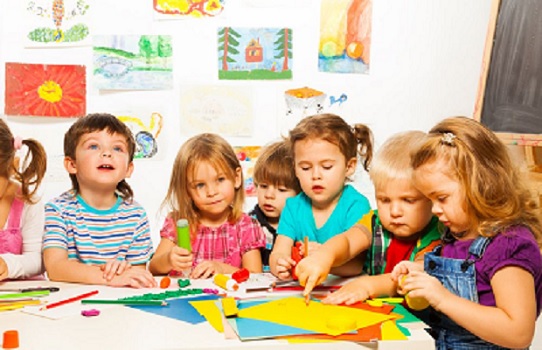It is very important to develop the child’s thinking, attention, logic, and practical skills. So, we briefly discuss Aesthetic education and development of children. But it is equally important to introduce the child to the beautiful, to teach them to see the beauty around. The purpose of aesthetic education and the development of children is the development of artistic taste, creative abilities, and the formation of an aesthetic ideal.
Aesthetic education at home
From early childhood, children should be shown different illustrations, read a variety of literature, recite poetry, and turn on music. Gradually, the child will learn to see, feel and hear the beauty in words, melody, and drawing.
It is important to tell and show the child the beauty of nature. Let him carefully consider a flower, a cloud, listen to the birds sing, how the stream murmurs. More often it is worth focusing on how beautiful this or that natural phenomenon (rainbow, sunset) is. You can read poems about nature.
As the child grows older, he should be introduced to the works of various artists, composers, writers and poets. Talk, tell your impressions, and get an opinion, explain what the composer or writer wanted to convey with his work.

In kindergarten and school
At school and kindergarten, attention is necessarily paid to the aesthetic education of children. To this end, teachers conduct classes: creating crafts, drawing, listening to music, modeling, and having conversations.
Children are introduced to work at festivals, competitions, and matinees. They arrange excursions, visits to museums and expositions, and spend evenings of literary and poetic creativity. In addition, the children are given creative homework assignments.
Visiting museums, Exhibitions, and concerts
It is very important to regularly attend various exhibitions of artists, sculptors, museums, and concerts. Walking around the city, you can introduce the child to the sights, paying attention to beautiful details. It is advisable to know the history of the attraction in advance so that the story is interesting and informative.
You can use virtual tours and sometimes travel to other larger cities to visit museums and exhibitions.
Of course, it all depends on age. At the age of five, you can visit the puppet theater. And at the age of ten, you can go to a ballet or an exhibition by an artist.
Creation
Aesthetic development involves creative pursuits. It is advisable to try everything. You can sculpt, draw, sing, dance, do crafts, sew, embroider, knit, burn wood, and write poetry or stories. And start at an early age. Toddlers can be offered finger paints, older children can use plasticine and gouache, and school-age children can choose any options.
When a child decides what he likes to do more, it is worth attending special classes. Acting class, singing or felting – it doesn’t matter, the main thing is that the child likes it, that he feels that he is doing something beautiful.
It is important not to focus on education only in one direction. For example, to develop intellectual abilities, forgetting about aesthetic and physical education. Or to focus only on aesthetic development, forgetting about other areas of education. Development and education should be harmonious and comprehensive.
You may also like:- Lev Vygotsky’s ideas about the psychology of child development


